Measurement of the Hadronic Resonance Production with ALICE at the CERN LHC †
Abstract
:1. Introduction
2. ALICE Detector
3. Results and Discussion
3.1. pp and p-Pb Collisions
3.2. Pb-Pb and Xe-Xe Collisions
4. Conclusions
Funding
Conflicts of Interest
References
- ALICE Collaboration. The ALICE experiment at the CERN LHC. J. Instrum. 2008, 3, S08002. [Google Scholar]
- ALICE Collaboration. Production of Σ(1385)± and Ξ(1530)0 in p-Pb collisions at = 5.02 TeV. Eur. Phys. J. C 2017, 77, 389–403. [Google Scholar] [PubMed]
- ALICE Collaboration. Enhanced production of multi-strange hadrons in high-multiplicity proton-proton collisions. Nat. Phys. 2017, 13, 535–539. [Google Scholar] [CrossRef]
- ALICE Collaboration. Two pion Bose-Einstein correlations in central Pb-Pb collisions at = 2.76 TeV. Phys. Lett. B 2011, 696, 328–337. [Google Scholar] [CrossRef]
- ALICE Collaboration. K*(892)0 resonance production in Au+Au and p+p collisions at = 200 GeV at STAR. Phys. Rev. C 2005, 71, 064902–064918. [Google Scholar] [CrossRef]
- ALICE Collaboration. Measurements of φ(1020) meson production in relativistic heavy-ion collisions at RHIC. Phys. Rev. C 2009, 79, 064903–064925. [Google Scholar] [CrossRef]
- ALICE Collaboration. Production of ρ(770)0 meson in pp and Pb-Pb collisions at = 2.76 TeV. arXiv, 2018; arXiv:1805.04365. [Google Scholar]
- Knospe, A.G.; Markert, C.; Werner, K.; Steinheimer, J.; Bleicher, M. Hadronic resonance production and interaction in partonic and hadronic matter in the EPOS3 model with and without the hadronic afterburner UrQMD. Phys. Rev. C 2016, 93, 014911–014923. [Google Scholar] [CrossRef]
- Andronic, A.; Braun-Munzinger, P.; Stachel, J. Thermal hadron production in relativistic nuclear collisions: The hadron mass spectrum, the horn and the QCD phase transition. Phys. Lett. B 2009, 673, 142–145. [Google Scholar] [CrossRef]
- ALICE Collaboration. K*(892)0 and φ(1020) meson production at high transverse momentum in pp and Pb-Pb collisions at = 2.76 TeV. Phys. Rev. C 2017, 95, 064606–064621. [Google Scholar] [CrossRef]
- ALICE Collaboration. Centrality dependence of charged particle production at large transverse momentum in Pb-Pb collisions at = 2.76 TeV. Phys. Lett. B 2013, 720, 52–62. [Google Scholar] [CrossRef]
- ALICE Collaboration. Production of charged pions, kaons and protons at large transverse momenta in pp and Pb-Pb collisions at = 2.76 TeV. Phys. Lett. B 2014, 736, 196–207. [Google Scholar]
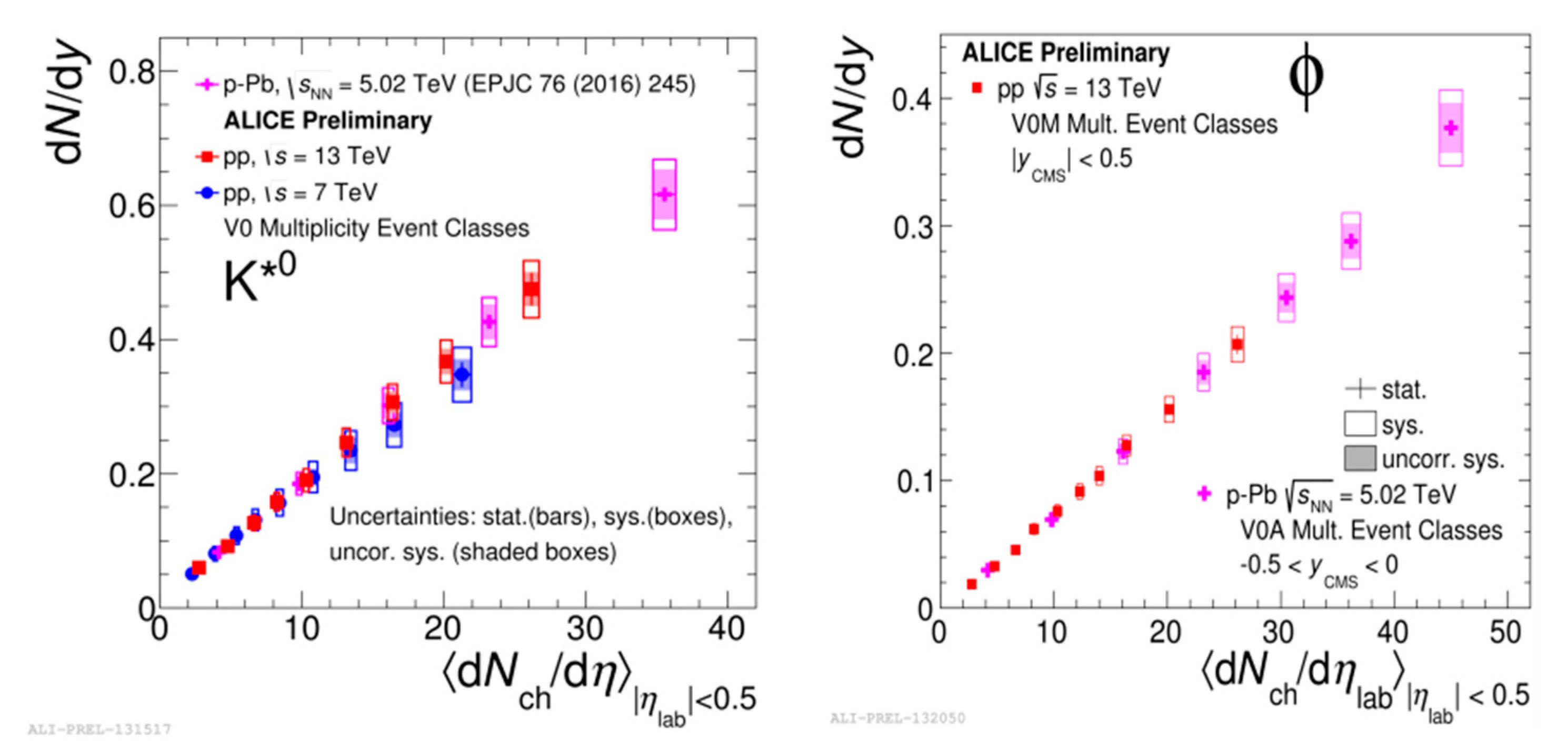


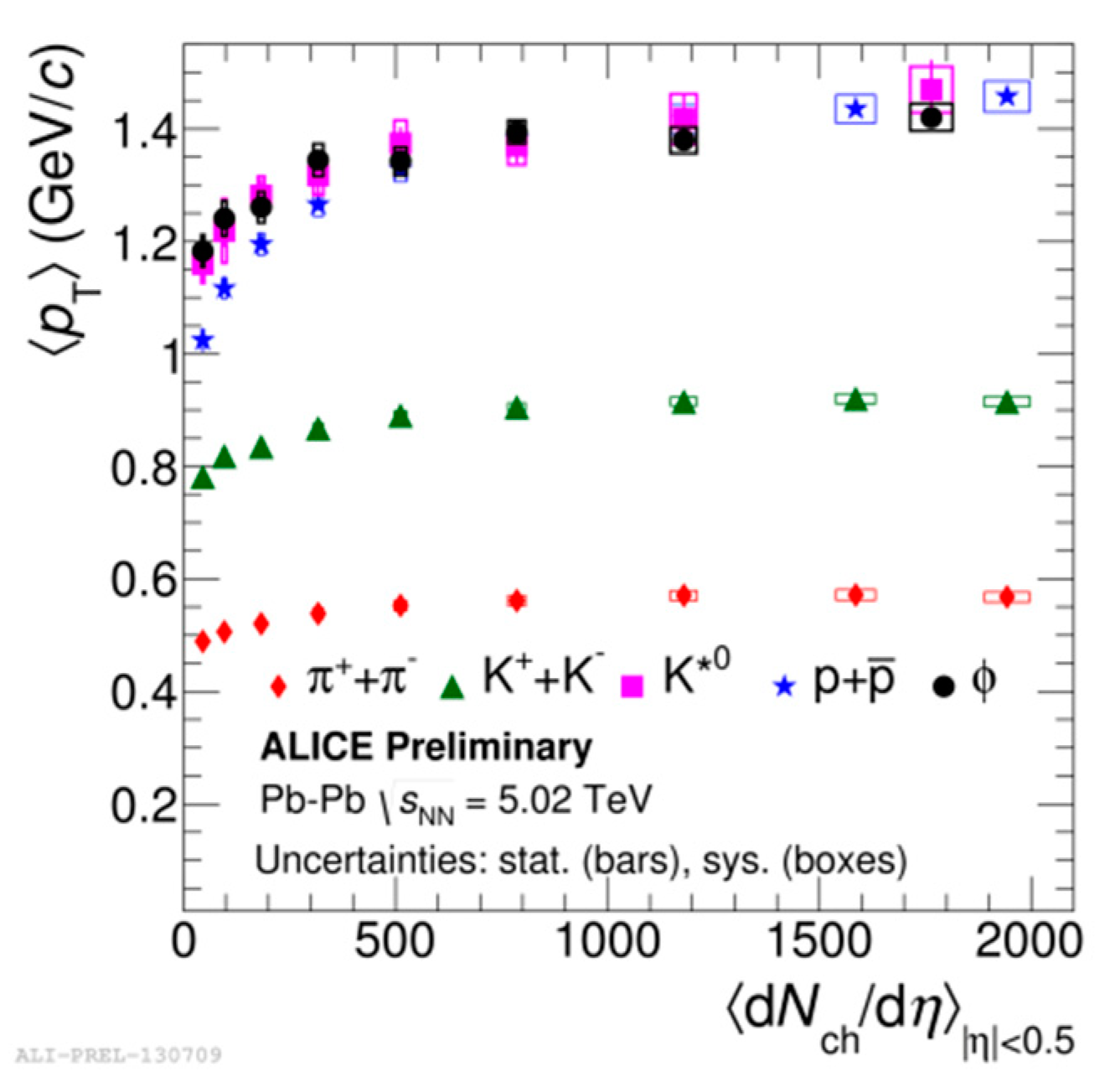
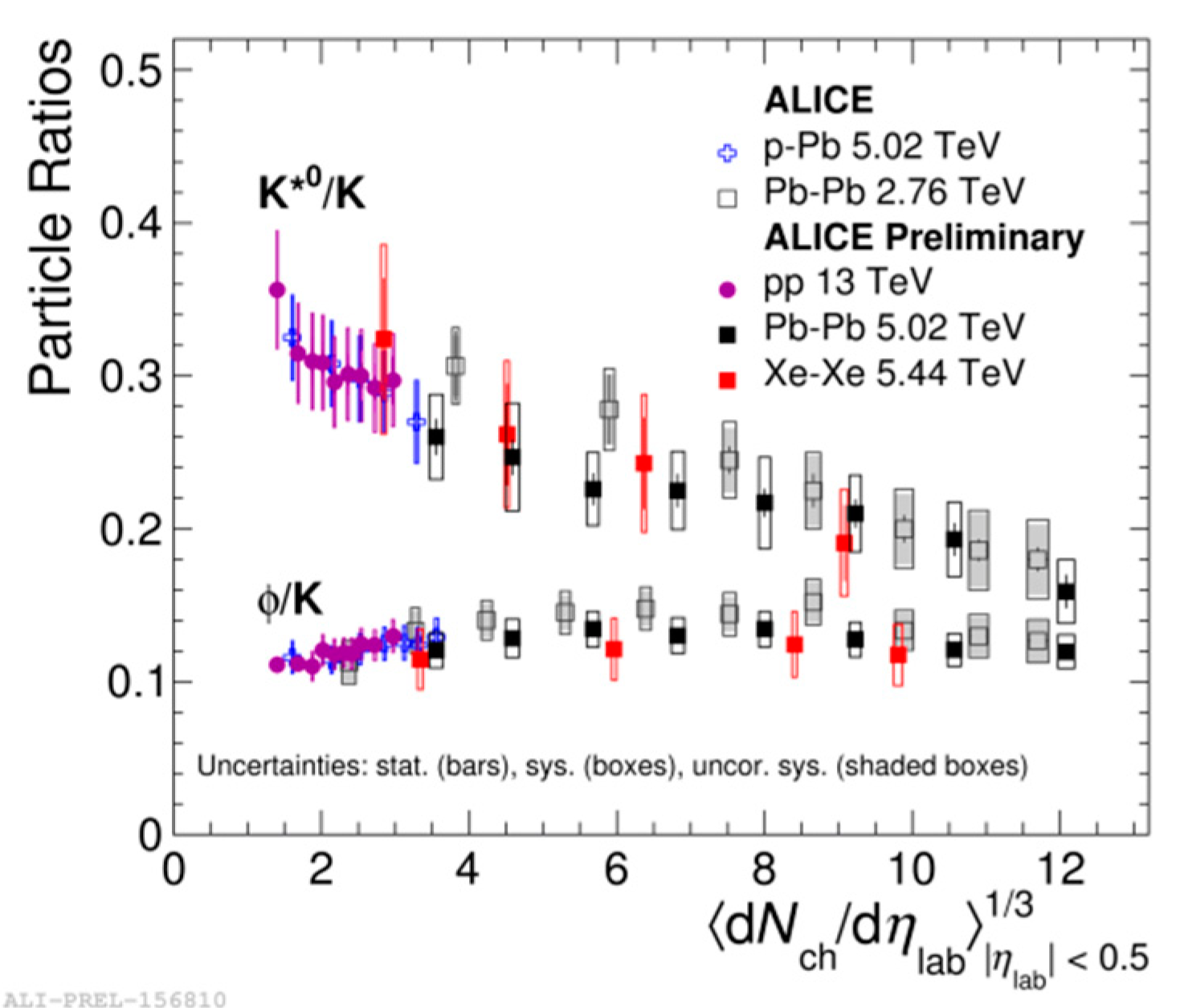
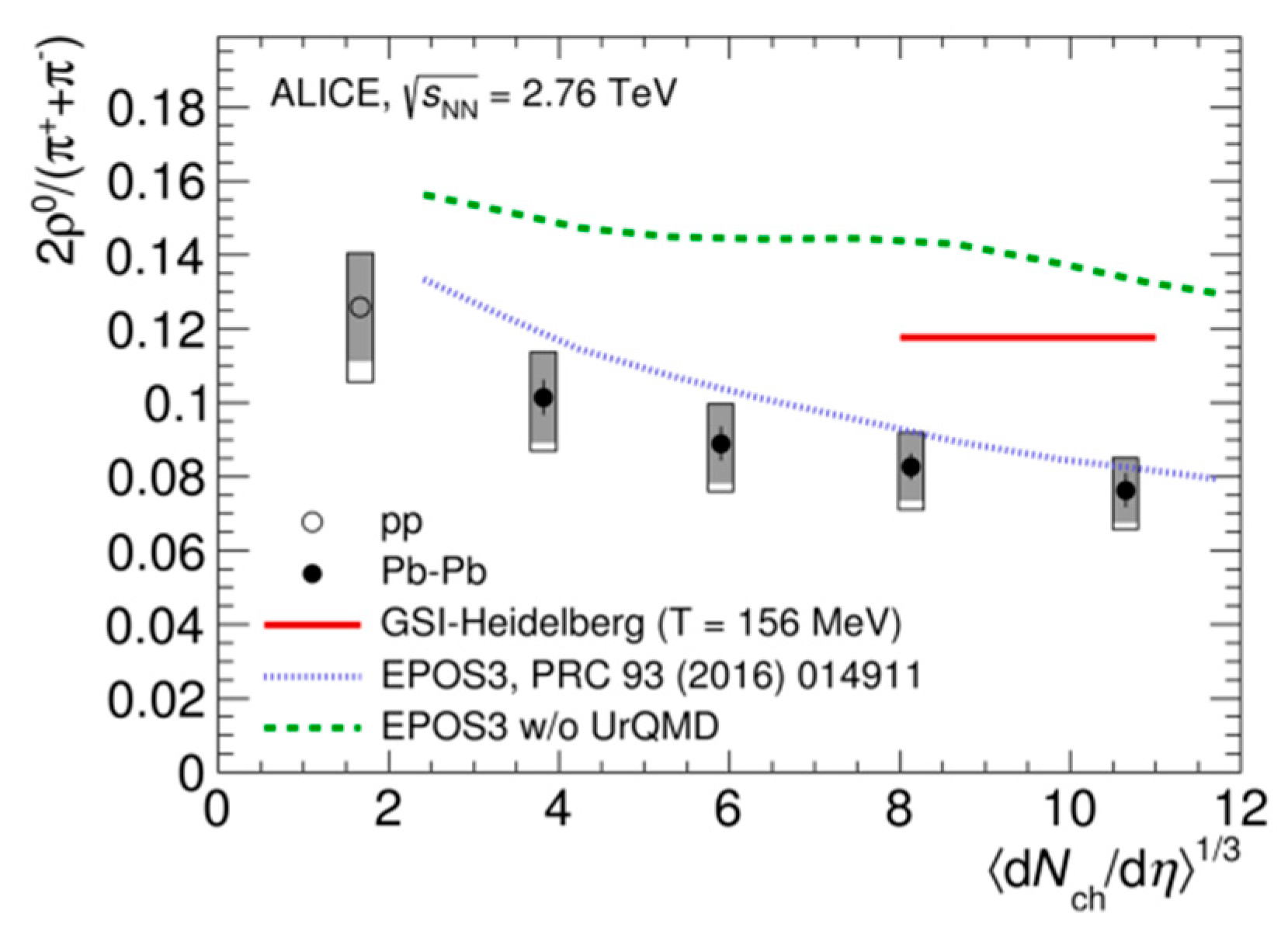
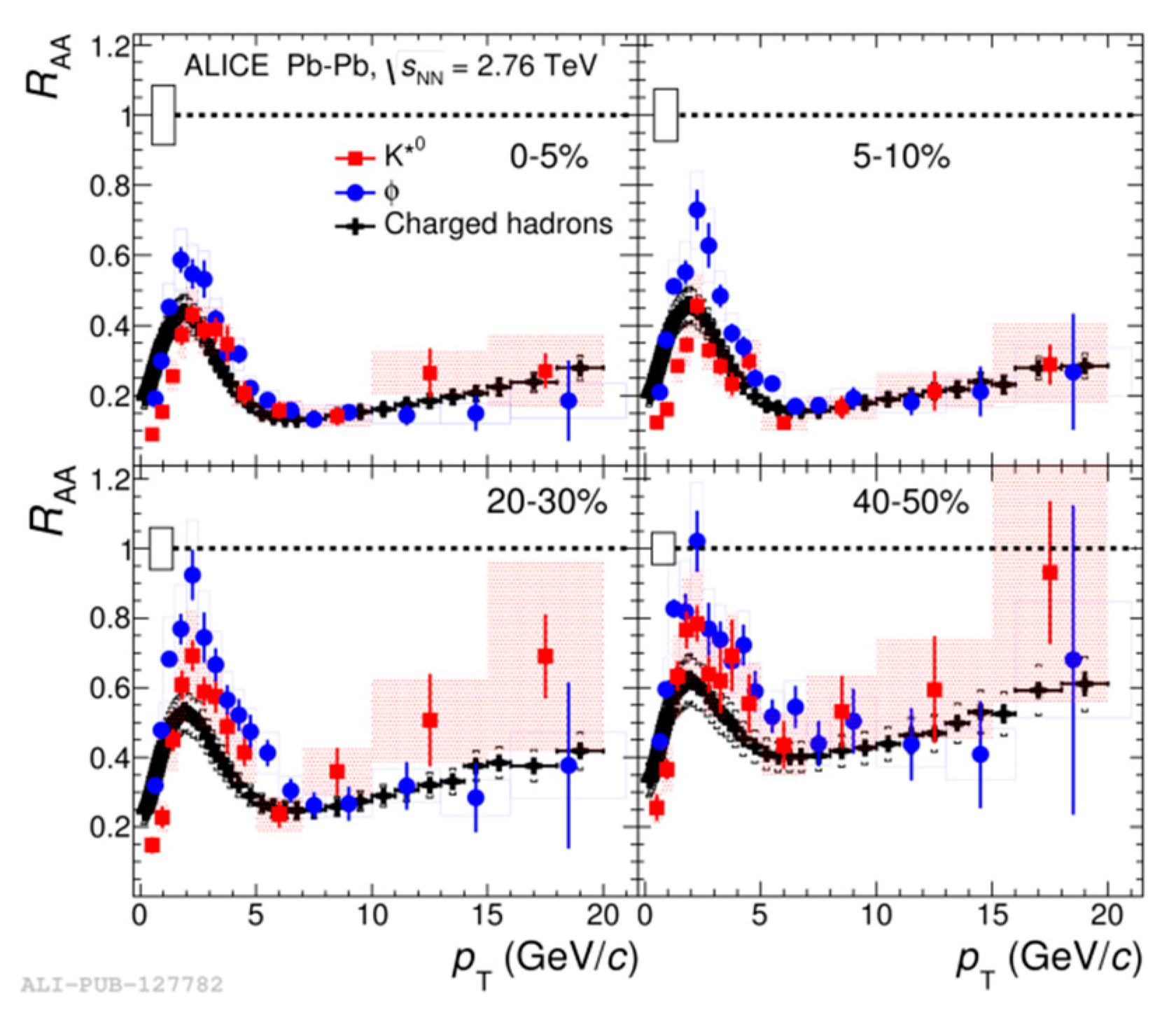
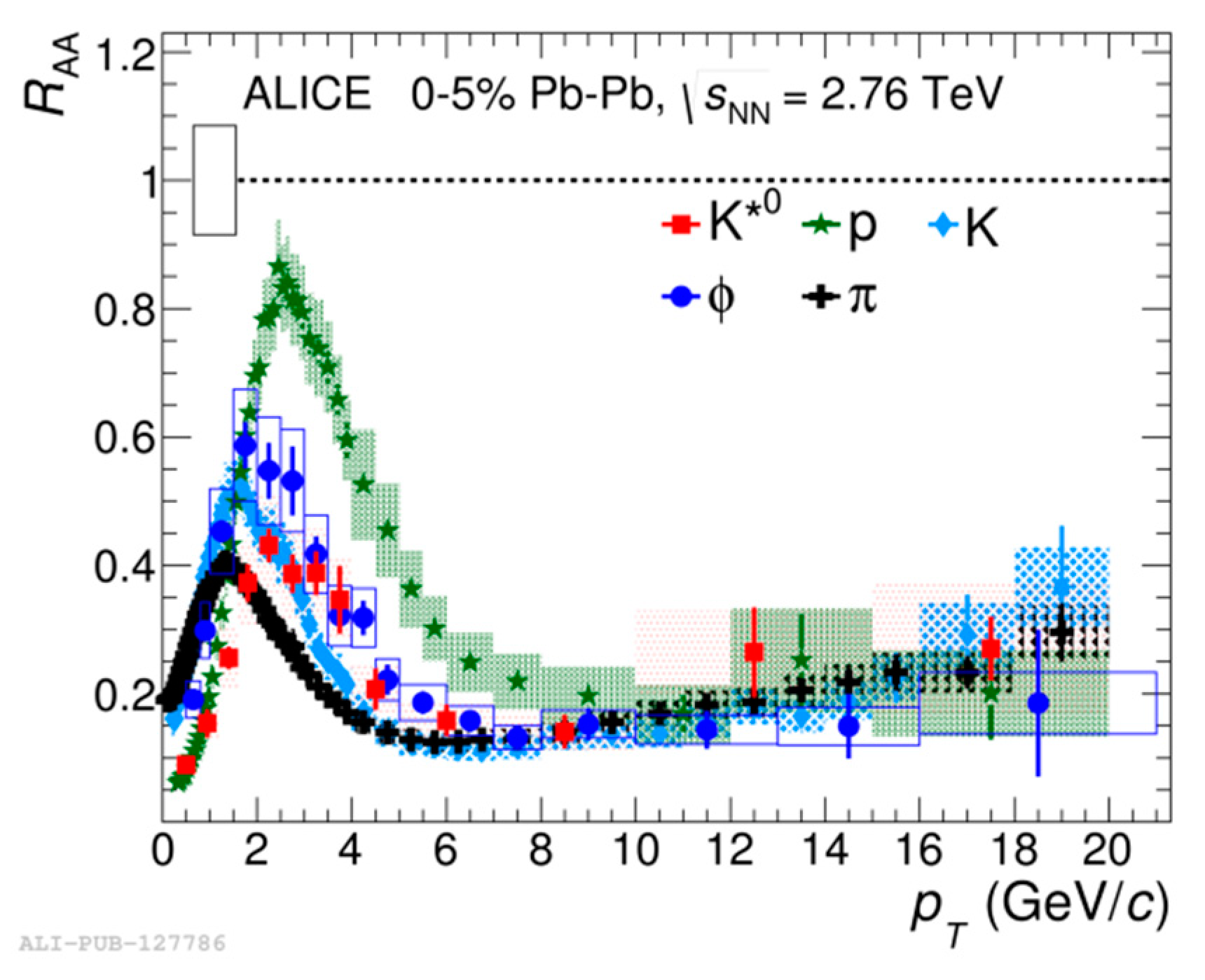
© 2018 by the author. Licensee MDPI, Basel, Switzerland. This article is an open access article distributed under the terms and conditions of the Creative Commons Attribution (CC BY) license (http://creativecommons.org/licenses/by/4.0/).
Share and Cite
Vasileiou On behalf of the ALICE Collaboration, M. Measurement of the Hadronic Resonance Production with ALICE at the CERN LHC. Universe 2019, 5, 6. https://doi.org/10.3390/universe5010006
Vasileiou On behalf of the ALICE Collaboration M. Measurement of the Hadronic Resonance Production with ALICE at the CERN LHC. Universe. 2019; 5(1):6. https://doi.org/10.3390/universe5010006
Chicago/Turabian StyleVasileiou On behalf of the ALICE Collaboration, Maria. 2019. "Measurement of the Hadronic Resonance Production with ALICE at the CERN LHC" Universe 5, no. 1: 6. https://doi.org/10.3390/universe5010006
APA StyleVasileiou On behalf of the ALICE Collaboration, M. (2019). Measurement of the Hadronic Resonance Production with ALICE at the CERN LHC. Universe, 5(1), 6. https://doi.org/10.3390/universe5010006



